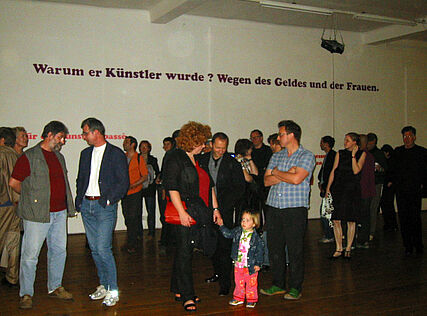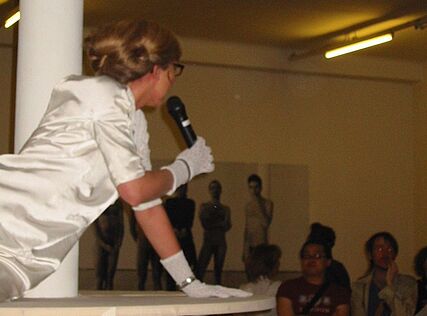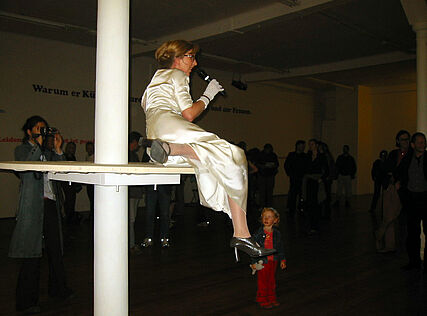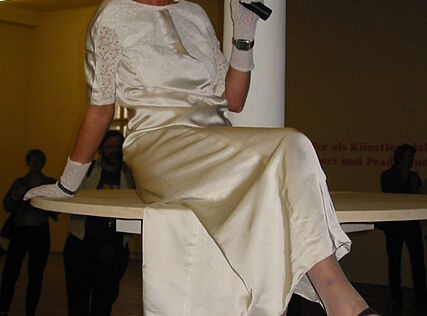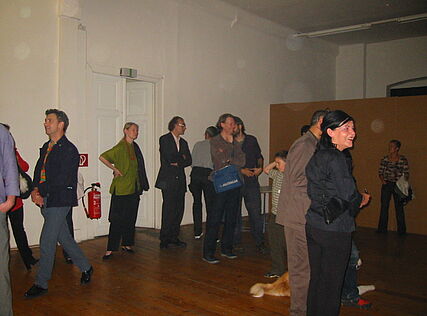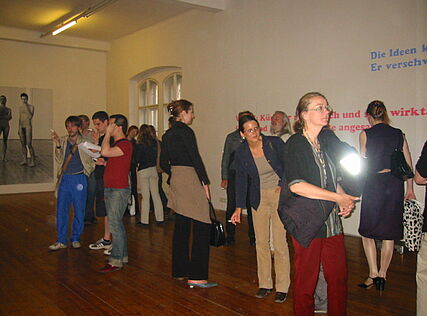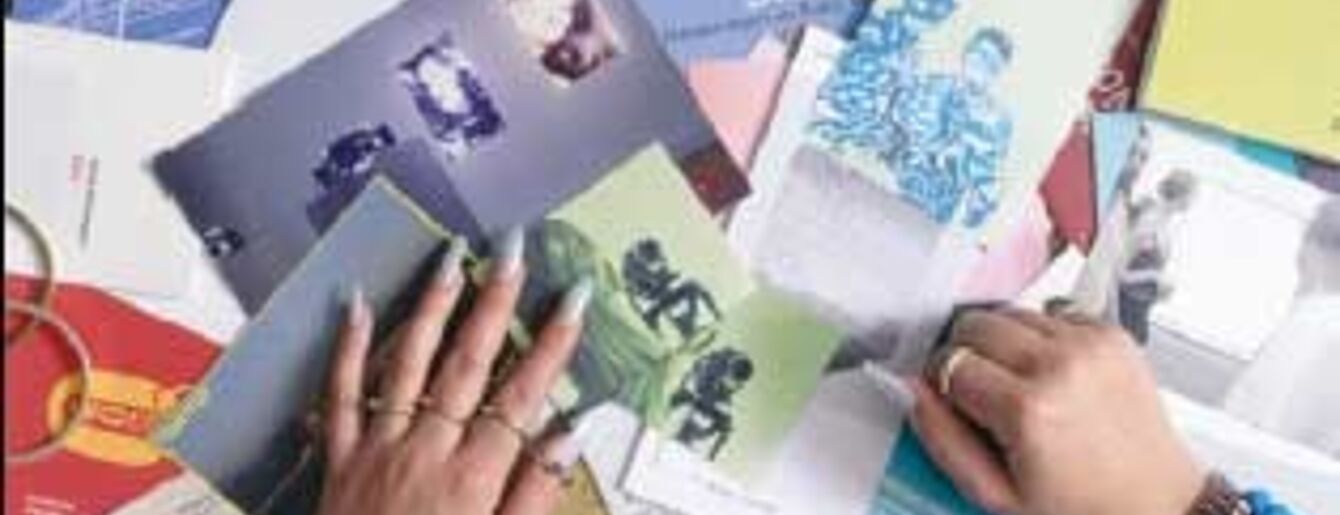
We 15.5.2002 - Fr 14.6.2002
kex—kunsthalle exnergasse
B
Ilse Haider
Preview: Wednesday 15th May 2002, 7.00 p.m.
Performance: 7.30 pm
In her comprehensive spatial concept ‘The Comforting Camera’, Ilse Haider stages the artist’s eagerly followed appearance like a play in a theatre. The performance deals with fundamental questions relating to the task of the artist today: what audience expectations does the artist see herself confronted with? What are the motives which allow the present-day artist to pursue her professional career? How can everyday life and the striving to work artistically be combined? What achievement strategies can be adopted in order to succeed?
The formal means used to stage this work organise the exhibition space into various different spatial segments. A wall cuts through the hall and divides it into stage and backstage. In the backstage area one first enters the waiting room, which is furnished with chairs and mirrors – the artist’s changing-room and the theatre audience’s foyer. As a further delaying moment that increases the tension, one arrives, via a small spatial divider, at the projection of a video showing the artist’s workrooms, which seem to constantly rearrange themselves and clear themselves up of their own accord. From the zone of preparation one proceeds via a door to the actual stage.<o:p></o:p>
This continues the committment to the wealth of meaning found in the English word group surrounding suspense (tension) and suspension (delay, postponement). Although many things are actually hung up, they nevertheless remain suspended and undecided. The artist sometimes suspends herself, shifting the role of being the main attraction onto the audience itself. <o:p></o:p>
Everything is in a ‘critical situation’ (Lat. res suspensum) and the visitor continues to be kept in an agony of suspense. Two of the many elements in the main room that are interconnected provide a suspension or elimination of this state. The argument allowed by ‘The Comforting Camera’ – the ‘inner monologue’ about the little disadvantages of everyday life that is spoken out loud into the camera – later becomes medially possible after a delay.<o:p></o:p>
What is more, the artist reverses the traditional erotic tension between the naked female model and the clothed artist, as found in classical painting, by surrounding herself (in a clothed state) with four naked men on a photograph taken at the location of the event itself. <o:p></o:p>

